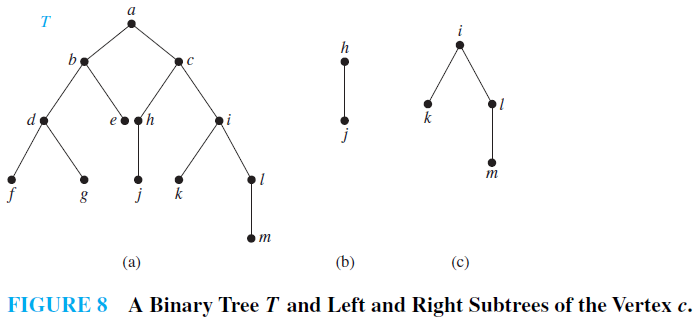SKEDSOFT
ORDERED ROOTED TREES An ordered rooted tree is a rooted tree where the children of each internal vertex are ordered. Ordered rooted trees are drawn so that the children of each internal vertex are shown in order from left to right. Note that a representation of a rooted tree in the conventional way determines an ordering for its edges.We will use such orderings of edges in drawings without explicitly mentioning that we are considering a rooted tree to be ordered. In an ordered binary tree (usually called just a binary tree), if an internal vertex has two children, the first child is called the left child and the second child is called the right child. The tree rooted at the left child of a vertex is called the left subtree of this vertex, and the tree rooted at the right child of a vertex is called the right subtree of the vertex. The reader should note that for some applications every vertex of a binary tree, other than the root, is designated as a right or a left child of its parent. This is done even when some vertices have only one child.
EXAMPLE 4 What are the left and right children of d in the binary tree T shown in Figure 8(a) (where the order is that implied by the drawing)? What are the left and right subtrees of c?
Solution: The left child of d is f and the right child is g. We show the left and right subtrees of c in Figures 8(b) and 8(c), respectively.

Just as in the case of graphs, there is no standard terminology used to describe trees, rooted trees, ordered rooted trees, and binary trees. This nonstandard terminology occurs because trees are used extensively throughout computer science, which is a relatively young field. The reader should carefully check meanings given to terms dealing with trees whenever they occur.